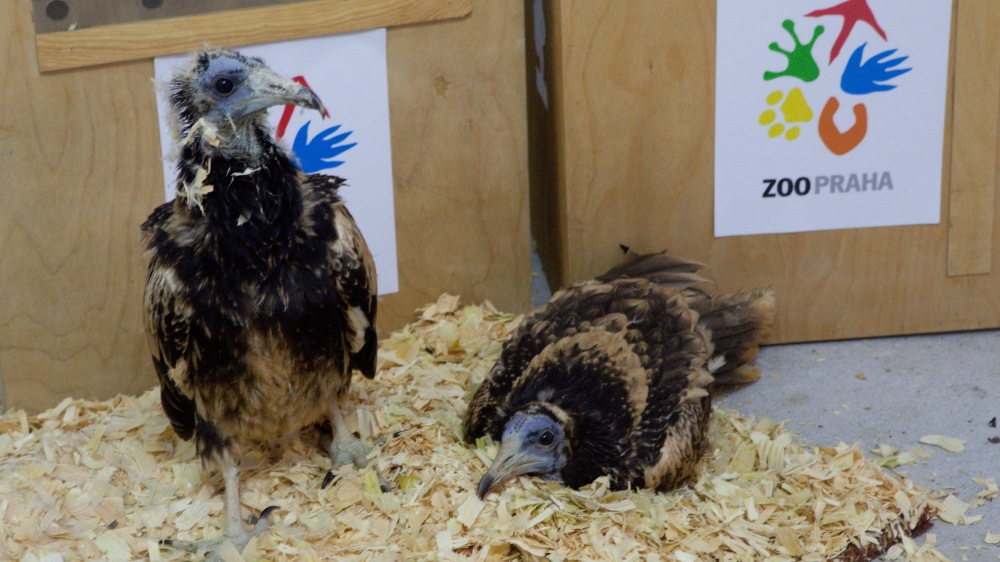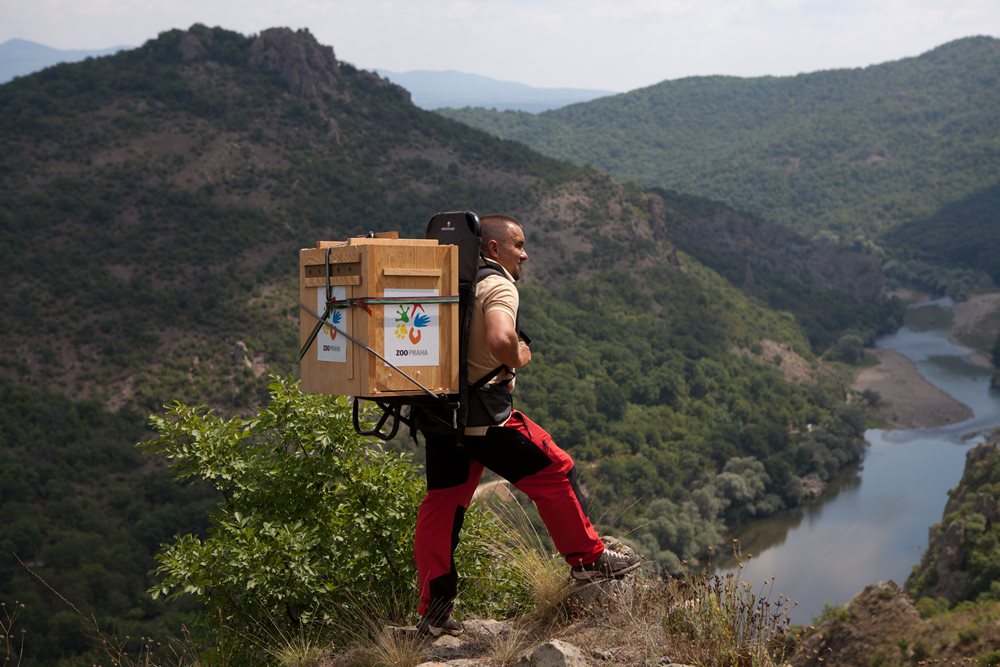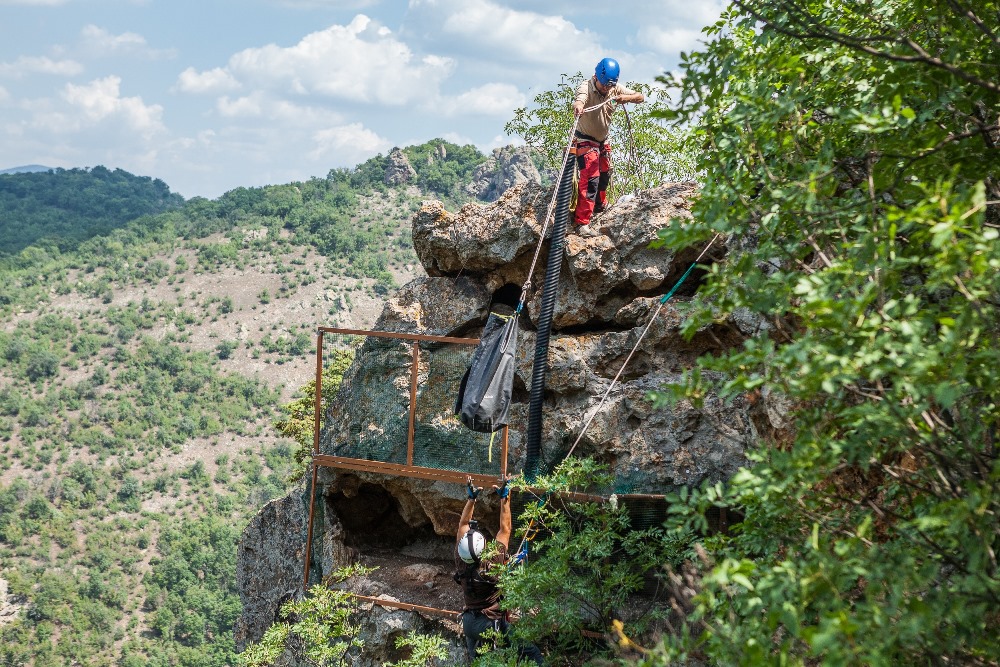Prague Zoo transported two more endangered Egyptian vultures to the Bulgarian mountains
06. 08. 2019
Another two Egyptian vultures reared at Prague Zoo – this time two females, one of which was hatched at Zlin Zoo – acquired a new home in the Eastern Rhodopes, where they will strengthen this endangered species’ local population. They will spend about ten days in an artificial nest on a rocky niche overlooking the Arda River, then the Bulgarian conservationists will release them into the mountains whilst continuously monitoring their movement.

Prague Zoo employees first drove the two female vultures to the breeding and rescue station in Stara Zagora. There the vultures raised in Prague spent their last night in captivity with a veterinary examination in the morning. On the left, the chick hatched at Prague Zoo, on the right, the female hatched at Zlín Zoo. Photo: Lenka Pastorčáková, Prague Zoo
The Egyptian vulture is currently the most endangered of European vultures. It has been listed as 'endangered' in the IUCN Red List since 2007. Prague Zoo has been keeping the stud book for it since 2002 and has been managing the EEP rescue programme since 2012. The first Egyptian vulture to be bred in Prague Zoo was in 2000 and since then 32 chicks have been hatched. No other zoo in the world can boast such success. However, this is not the end of Prague Zoo’s endeavours.
“The Balkan Peninsula is an important bridge between the western and eastern populations of this vulture, with less than thirty pairs currently living in Bulgaria. Therefore, since 2013, Prague Zoo has been working with Green Balkans to increase the vulture population in the Balkans,” said Miroslav Bobek, Prague Zoo’s director. “First, we arranged the construction of breeding aviaries in Stara Zagora, in 2016 we started the experimental release project. This year, thanks to this cooperation, thirteen vultures have flown off into the Bulgarian mountains, eight of them raised at Prague Zoo.”
The vulture hatched in Prague Zoo will be joined in the nest under a rocky overhang by a vulture that is almost the same age and was hatched in Zlín Zoo. Both zoos cooperate successfully on breeding these rare scavengers and then releasing them into the wild.

“The two young females reared in Prague Zoo are now in a secure nest on the rocky niche, where the conservationists feed them with a pipe, so they don’t come into contact with humans,” explained Antonín Vaidl, curator of bird breeding and EEP coordinator for the Egyptian vulture. “In about ten days, the conservationists will use a pulley to open the mesh barrier and the two females will fly off into the Bulgarian mountains. They’ll be joined by two chicks hatched by Lilly and Andy – a breeding pair from Prague Zoo – which were transported to the breeding and rescue station in Stara Zagora last February.”
“The Eastern Rhodopes have the highest population of Egyptian vultures in the Balkans, but it is still not enough. The more released here, the better. Thanks to this truly exceptional cooperation with our colleagues from Prague Zoo, we can raise a lot more chicks every year. Because our cooperation continues to strengthen the wild population, it is one of the most important missions a modern zoo can have. In the case of Zlín, 16 hand-raised vultures have been released into the wild, though not all of them were Egyptian vultures,” pointed out Roman Horský, the director of Zlín Zoo.
Zlín Zoo has been keeping Egyptian vultures since 2007. The first chick to be hatched there was in 2013, the total number of young raised, including the two this year, is 11 individuals. In 2015, the first Egyptian vulture was released in Calabria in Italy, then in 2018, two more individuals were sent to Bulgaria's Eastern Rhodopes.
This project, aimed at increasing the wild population of endangered (even critically endangered in the Balkans) Egyptian vultures in the Balkans, is carried out in cooperation with BirdLife Bulgaria (BSPB), the Green Balkans conservation organization, the Vulture Conservation Foundation (VCF) and the European Association of Zoos and Aquariums (EAZA).









